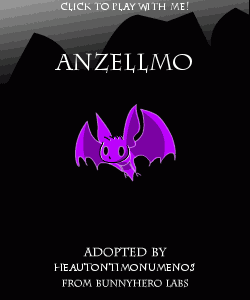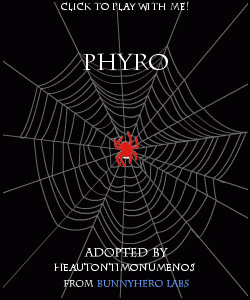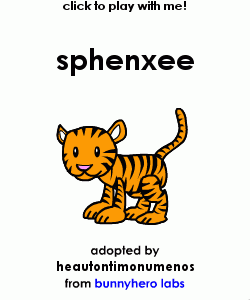Doom Twilight
21.04.2006., petak
samo za naamah...povijest doom metala
From the early days of Black Sabbath to the modern-day Death/Doom-Metal of My Dying Bride - A complete historical overview of our beloved genre.  Early doom bands of the seventies... Most people agree that Black Sabbath is amongst the most influential bands for all heavy metal in general, and Doom-Metal is no exception. Their early albums 'Black Sabbath', 'Paranoid', 'Master Of Reality', 'Vol. 4', 'Sabbath Bloody Sabbath', and 'Sabotage' are all without doubt, masterpieces, and without them Doom-Metal (or even metal in general) would not exist at all. Whilst Black Sabbath were definitely well ahead of their time, and as such one of a kind, they certainly weren't without their contemporaries (Pentagram, Blue Cheer, Black Widow). Some of the earliest prototypes of Doom-Metal were in fact songs of the late sixties and early seventies that, whilst not wholly doomy, contained countless great riffs that came to shape the sound of Doom-Metal in later years. Such songs include Iron Butterfly's 'Inna Gadda Da Vida'. One of Black Sabbath's main contemporaries - Pentagram - can be counted as one of the earliest Doom bands around, often intertwining with the band Bedemon one could perhaps best label their style of music as "Proto Doom". Black Sabbath has a huge impact on their sound but they focused more on the doomy side of this style. Thus creating some of the first ever Doom-metal records! The eighties... The 1980s brought with them the first bona fide Doom-Metal acts. This was the era in which bands such as Def Leppard, Warrant, and Bon Jovi came to the foregrounds and professed to be "heavy metal", and where thrash/speed and death metal bands ruled the metal scene. The press also applied the term "heavy metal" in a nasty pigeonholing manner to any band that wore tight spandex and big hair. Whilst there are so many bands during that time that were truly deserving to fly under the banner of Doom-Metal, they were vastly outnumbered by these Glam-metal acts. The eighties were also known for the end period of the NWOBHM, another semi-fast style of metal. So in an era where speed was the prominent factor in extreme music, Doom-Metal acts where greatly outnumbered, but this is the era where Doom-metal was mostly developed and created a name for itself. One 80s band that made Doom big was Trouble. Originally from Chicago, this band got together in 1979 but gained popularity from 1984 onwards. Trouble's music stands for slow, dragging heavy metal, clearly influenced by Black Sabbath. Due to Christian beliefs of the band and its effect on their lyrics the band initially fell under the label White-metal. Saint Vitus, another early doom-oriented band, had perhaps the biggest influence on the Doom-metal landscape (together with Candlemass). Their early work was on SST (Greg Ginn from Black Flag's label) and was mostly fronted by Wino who gained more fame later with semi-doom majors The Obsessed. Wino became one of the most legendary figures of Doom-metal in his own right. From his beginnings with The Obsessed, moving on to St. Vitus, and re-forming The Obsessed, he became one of the most prominent and influenctial figures within the Doom-metal scene. He now frequents the Stoner scene with his current band Spirit Caravan. In 1986, Swedish band Candlemass  released the album 'Epicus Doomicus Metallicus', a milestone in early Doom-Metal. Once called "the heaviest band in the world" they picked up where Black Sabbath left off in 1976. The material on 'Epicus Doomicus Metallicus' was in the same style as old Black Sabbath (with Ozzy) but with modern contemporary influences. Candlemass' best years were those with vocalist Messiah Marcolin, a man with an exceptionally clear, deep voice. For doom newbies the CD 'As It Is, As It Was: The Best Of Candlemass' (Music For Nations, 1994) gives a good overview of their works. released the album 'Epicus Doomicus Metallicus', a milestone in early Doom-Metal. Once called "the heaviest band in the world" they picked up where Black Sabbath left off in 1976. The material on 'Epicus Doomicus Metallicus' was in the same style as old Black Sabbath (with Ozzy) but with modern contemporary influences. Candlemass' best years were those with vocalist Messiah Marcolin, a man with an exceptionally clear, deep voice. For doom newbies the CD 'As It Is, As It Was: The Best Of Candlemass' (Music For Nations, 1994) gives a good overview of their works. Another doom pioneer in the late eighties was Lee Dorrian's band Cathedral. When Lee left Napalm Death in 1989 nobody expected such a volte face. As opposed to Napalm Death's ultra-fast music Cathedral's first releases were ultraslow, super-heavy doom in its purest form. Check out the albums 'In Memorium' and 'Forest Of Equilibrium'. Cathedral's later works are more seventies-rock oriented and the doom atmosphere has slowly faded away. One label that was very important to this first generation of Doom-metal, and was mainly active during the very end of the eigthies to the mid nineties, was the Hellhound Label. This label signed a great deal of Doom-metal acts whose sound later became known as the "hellhound sound", industriously forming a clear foundation for future Doom-metal acts to build upon. Bands like The Obsessed and Count Raven released many records through this label. The nineties... The early 90s heralded a change in the Doom-Metal landscape. With Death-metal having taken over the metal torch halfway through the eighties, Doom-Metal enjoyed a revival. New bands emerged that sought a mix between original Doom-Metal and Death-metal. Early pioneers like Winter with their release 'Into Darkness' in 1990 and Thergothon with their brilliant demo 'Fhragn-nagh Yog-Sothoth' in 1991 broke through the original boundaries of traditional Doom-Metal and formed the building blocks for modern day Doom-Metal. Lets also however not forget a band like diSEMBOWELMENT. Bands like Winter, Thergothon and diSEMBOWELMENT could not gain the success later doom bands would have with this new style. Three bands from England, whom all shared the same label, Peaceville, propelled the Death/Doom genre to the level at which it stands today; Paradise Lost being the first with their release of 'Lost Paradise' in 1990 (which still had a strong death-metal influence). With 'Gothic' in 1991 they however almost single-handed set the standard for modern-day doom. Fellow label mates My Dying Bride succeeded in opening the gates for countless new Doom-Metal bands. Their first official release on Peaceville, 'Symphonaire Infernus Et Spera Empyrium', in 1991 already showed this band was destined for greatness and with their second full length 'Turn Loose the Swans' in 1993 they set their status as the largest modern-day Doom-Metal band. Another influence on this new form of Doom-Metal was the third Peaceville band called Anathema. Despite being one of "the big three" they always remained the smallest and least influential. Also worth mentioning is that at the beginning of the ninties, a band called Earth (no, not Black Sabbath with their orignal name) created some of the heaviest Sabbath influenced music ever. This band became a huge influence on so-called "Drone Doom", an extreme form of Doom-metal. Nor can we overlook the rise of an odd child within the Doom family, Sludge Doom; very heavy, miserable sounding Doom-metal that perhaps lacks the mournfull and emotions of Doom but fills those with pure filth, discust and anger. Of course also attoning to the teaching of Black Sabbath. Midway through the nineties the need for experimentation within the metal genre as a whole also touched the Doom-Metal genre. Bands like The 3rd and the Mortal created a more atmospheric type of doom with albums like Tears Laid in Earth' and were one of the first metal bands to have a fulltime female lead singer. Following in the wake of Thergothon, slower and more extreme acts than normal Death/Doom also started to emerge like Funeral, Skepticism and Esoteric. The experimentation "disease" lead to the many different types of Doom-Metal we know today. From the slow and emotionless sounds of Esoteric, Evoken and Skepticism to the Gothic/Doom-Metal hybrids like Theatre of Tragedy. And let's not forget that there is a whole host of new and old bands who still play the orignal style of Doom from the 80s. Owing to this flurry of experimentation, the boundaries between genres faded and various great Doom-Metal giants moved away from the sound they helped create, giving the whole Doom-Metal genre a creative input of which we have not yet seen the last. The new millenium has already proven that by making 2001 one of the best years for heavy Doom since the early ninties. This indeed promises much for the future...  |



